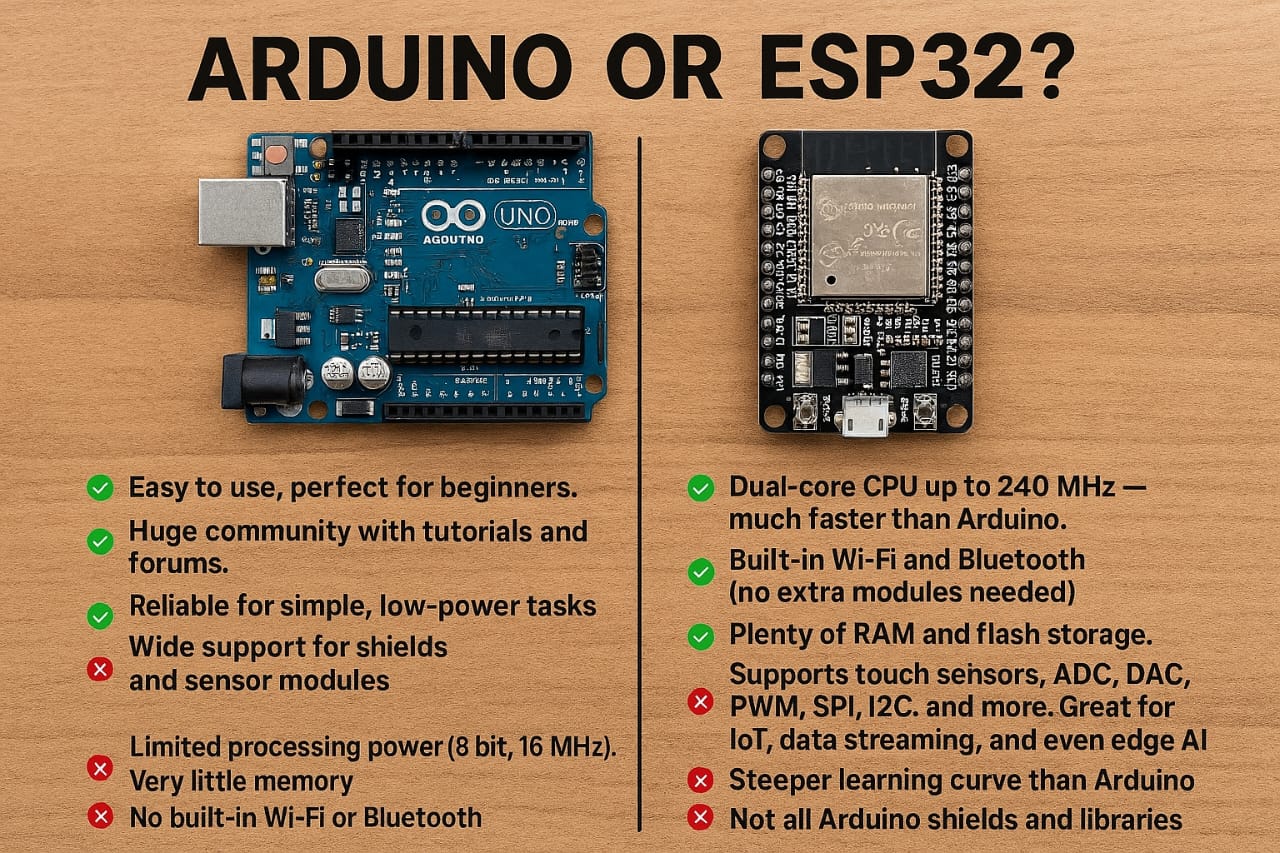If you’re stepping into the world of electronics or IoT, chances are you’ve come across Arduino and ESP32. Both are extremely popular in the maker community, but the real question is: Which one is best for your project? To help you decide, let’s compare their strengths and weaknesses in detail.
Arduino: The Beginner’s Best Friend
The Arduino family (Uno, Nano, Mega, etc.) has been the entry point for millions of makers. Known for simplicity, Arduino is often used for automation, robotics, and sensor-based projects.
✅ Pros of Arduino
-
Easy to use, perfect for beginners.
-
Huge community with tutorials and forums.
-
Reliable for simple, low-power tasks.
-
Wide support for shields and sensor modules.
❌ Cons of Arduino
-
Limited processing power (8-bit, 16 MHz).
-
Very little memory.
-
No built-in Wi-Fi or Bluetooth.
-
Not suitable for demanding tasks like IoT dashboards or AI.
ESP32: The Powerhouse of IoT
The ESP32, designed by Espressif, is a modern microcontroller with advanced features. It’s a favorite for IoT projects and applications where connectivity and performance matter.
✅ Pros of ESP32
-
Dual-core CPU up to 240 MHz — much faster than Arduino.
-
Built-in Wi-Fi and Bluetooth (no extra modules needed).
-
Plenty of RAM and flash storage.
-
Supports touch sensors, ADC, DAC, PWM, SPI, I2C, and more.
-
Great for IoT, data streaming, and even edge AI.
❌ Cons of ESP32
-
Steeper learning curve than Arduino.
-
Higher power consumption (less ideal for battery-only projects).
-
Not all Arduino shields and libraries work flawlessly.
-
Overkill for simple “blink an LED” type projects.
So, Which Should You Choose?
-
Go with Arduino if you’re just starting out, need something stable, or want to run a low-power project like a temperature logger.
-
Go with ESP32 if you want Wi-Fi/Bluetooth, need more processing power, or are building smart IoT devices.
In short: Arduino = simplicity and stability. ESP32 = power and connectivity.
# Whether you’re a beginner or building advanced IoT systems, knowing these differences helps you pick the right board for your project’s success.

